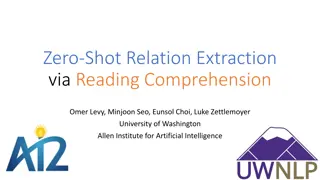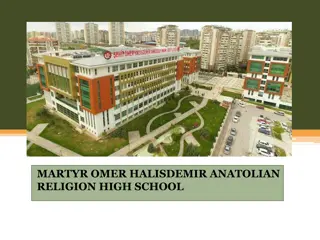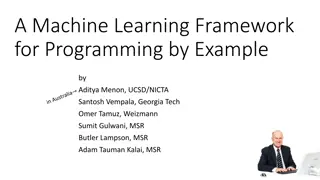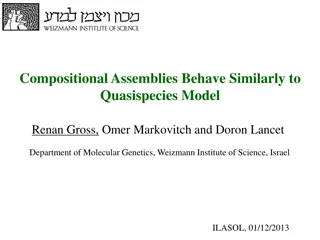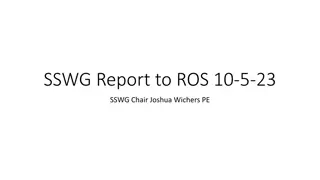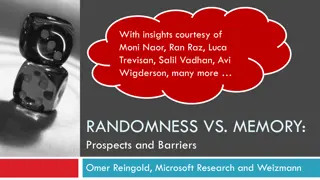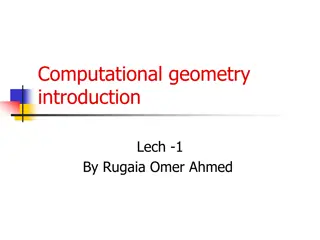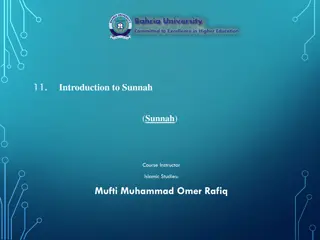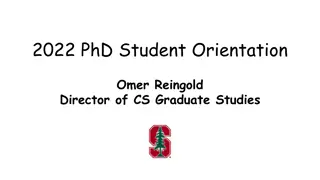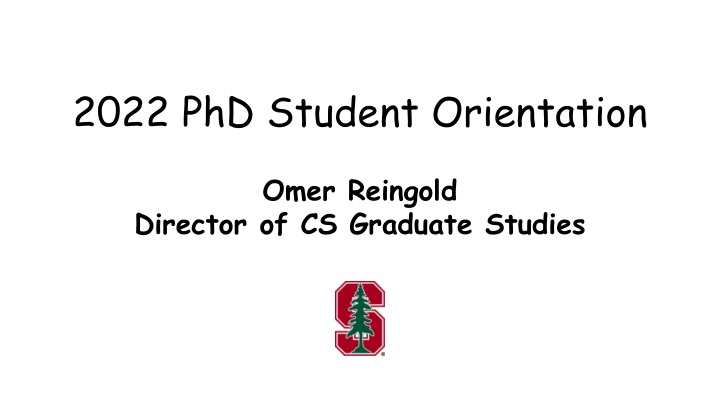
PhD Student Orientation and Academic Program Overview at Stanford CS Department
Welcome to the PhD student orientation at the Stanford Computer Science Department. Get insights into the academic program structure, requirements, crucial partnerships, and the importance of rotations for faculty and students. Understand how to align with advisors, choose rotations, and make the most of your research journey in a supportive environment. Explore the wondrous world of knowledge, freedom, and collaboration that awaits you at Stanford.
Download Presentation

Please find below an Image/Link to download the presentation.
The content on the website is provided AS IS for your information and personal use only. It may not be sold, licensed, or shared on other websites without obtaining consent from the author. If you encounter any issues during the download, it is possible that the publisher has removed the file from their server.
You are allowed to download the files provided on this website for personal or commercial use, subject to the condition that they are used lawfully. All files are the property of their respective owners.
The content on the website is provided AS IS for your information and personal use only. It may not be sold, licensed, or shared on other websites without obtaining consent from the author.
E N D
Presentation Transcript
2022 PhD Student Orientation Omer Reingold Director of CS Graduate Studies
Welcome to CS Stanford Students are one of the pillars on which the department stands together with staff (including research staff) and faculty (including lecturers). The department is yours just as much as ours. Each one of you is here for a good reason. We are looking forward to working with you. Your success is also our success. We are here to support you. You are shareholders, workers and customers of the department Protections, resources and expectations of a workplace.
Welcome to Wonderland Wonderous: a playground of knowledge and ideas; a lot of freedom; brilliant colleagues (junior and senior). Enjoy it (nothing to wait for). Baffling: a lot that is new and different Basic orientation. A lot to learn about research and about yourself give yourself time. Uncertainty is inherent part of research. Embrace it, be playful (an adventure). Rely on others.
The Program 1st Year: dedicated to rotations and alignment + CS 300 Breadth Requirements (under review): 6 courses (waivable), from 3 general areas. By end of 2nd year Qualifying Exams: determined by area. By end of 3rd year Reading Committee, Thesis Proposal, Defense Teaching: 2 full quarters worth of TAing Guidelines for reasonable progress on tasks and on research.
A Crucial Partnership A student adviser relationship: often the most impactful relationship in a student s career. Many different styles. When it works it s great. When it doesn t it could be a real problem for both student and adviser (rare but a concern). Your one job for year 1: align with an adviser. May not be the one you thought you would. Hence rotations Rotations allow students and faculty to get to know each other (real improvement) Allow students to re-evaluate their interests.
Rotations Students drive the process You approach faculty, ask to rotate Plan ahead! It s a market: Students evaluate faculty during rotations. Faculty evaluate students during rotations. Some students (and faculty) are more popular. Not everyone get their first choice (students or faculty). Sometimes works even better. Works the best if you are not set on a particular adviser.
Alignments Things to think about: Research interests: faculty will spend more time on projects they are excited about Compatible style: do you enjoy talking with them? Hands-on vs. hands-off. How much time do they spend with students? Talk to their existing students: How often do you meet with the adviser? For how long? Greatest strengths and weaknesses? Talk to senior students: What do you know now that you wish you d known during your first year? It s worth extra work: know what you are getting yourself into.
Rotation Tips Rotate only with faculty you can potentially align with, until you have at least one firm offer that you are happy with. Ask beforehand: How many new students do you expect to take this year? How many students will be rotating with you? How many of your slots have you already committed? What are your expectations during the rotation? Ask afterwards: How did I do? What parts were you least happy with? Are you prepared to offer me an RAship now? If not, when will you make the decision, and how will you make it? An evasive or heavily qualified answer probably means no.
Rotation Tips II Take rotations seriously: Easy on the classes. Careful with rotations leaking into each other. Take initiative, be active, get involved: Do something concrete (don t be picky). Work with other students. Learn from senior student. Be realistic: Probably can t write a paper in a quarter, may never lead to publication. Learn about an area, a faculty, and a style of doing research. Research experience. Make connections with other students and faculty.
Communication with US Jay and I are here for you! Please complete feedback on each rotations at the end of the quarter. Gives us early warning signs and valuable information on anything that needs to be fixed. Future years: annual progress reviews. Have candid discussions with advisers or contact us if you can t.
Parting Thoughts Psychology is a lot of what it is about. Not waste time evaluating yourself. Research is a job no Einsteins. Compete only as needed, collaborate often. You are the CEO of your enterprise. Not a sprint. Take your time to Learn this profession, learn yourself. Go deep, to think and play, to specialize. Enjoy research. Enjoy life (socialize, exercise, expand). Be kind to yourself and to those around you.

